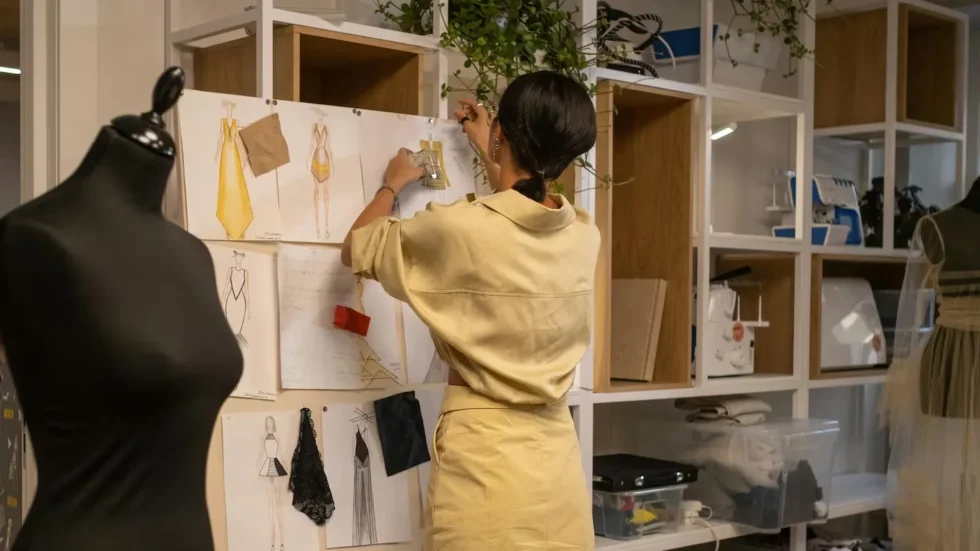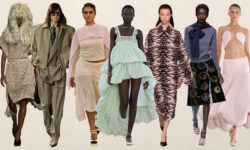
Fashion is often celebrated for its glamour—the dazzling runway shows, the red-carpet moments, and the effortless elegance of a perfectly styled outfit. But behind the spotlight is a world of tireless creativity, technical skill, and relentless problem-solving. The art of fashion design is more than drawing pretty dresses; it’s a complex blend of artistry, engineering, and cultural storytelling. Step behind the seams, and you’ll discover a vibrant ecosystem where vision meets craftsmanship.
From Concept to Catwalk: The Designer’s Journey
Every iconic garment begins with a spark of inspiration. Designers draw from everywhere: a vivid sunset, an old photograph, the rhythm of a city street, or even historical costumes. Mood boards—collages of images, textures, and color palettes—help crystallize these ideas into a cohesive vision.
Next comes sketching. Designers translate their concepts into initial drawings, refining shapes, proportions, and details. This is where the magic of imagination first takes tangible form. But sketches are just the beginning; fashion is a three-dimensional art. Translating a flat design into a garment that drapes and moves beautifully requires technical expertise and a deep understanding of the human form.
The Power of the Pattern
Behind every stunning dress or impeccably cut blazer lies a carefully crafted pattern. Pattern makers take the designer’s sketch and create a blueprint for the garment. This step requires precision—every seam, dart, and panel affects the way fabric flows on the body.
Pattern-making is equal parts geometry and sculpture. The designer and pattern maker work closely, adjusting measurements and contours to ensure the final piece fits perfectly while retaining the intended aesthetic. Without this stage, even the most brilliant design can fall flat.
Fabric: The Designer’s Palette
Fabric choice can make or break a design. Will the piece call for the fluid elegance of silk, the crisp structure of taffeta, or the edgy texture of leather? Designers spend hours sourcing textiles, evaluating weight, stretch, and color saturation.
Many high-end designers collaborate with specialty mills to create custom prints or innovative materials—think metallic threads, eco-friendly blends, or 3D-printed embellishments. The tactile quality of fabric adds depth to a designer’s vision, transforming a flat sketch into a living, wearable work of art.
Sample Making and Fittings: Where Vision Becomes Reality
Once the pattern and fabric are chosen, the first sample—or muslin—is sewn. This prototype allows designers to see how the garment behaves in three dimensions. Adjustments are inevitable: a sleeve might need more ease, a hem might hang unevenly, or a neckline might call for reimagining.
Multiple fittings follow, often with professional models, to perfect drape and proportion. This iterative process demands patience and a keen eye for detail. It’s here that creative artistry meets meticulous craftsmanship.
Collaboration: The Hidden Engine of Fashion
While designers often get the spotlight, fashion design is a team sport. Pattern makers, seamstresses, textile experts, embroiderers, and production managers all contribute their expertise. In haute couture, where garments can require hundreds of hours of handwork, artisans specializing in embroidery, beadwork, or pleating become co-creators.
Even the boldest vision can’t thrive without collaboration. The final garment is as much a testament to collective skill as it is to a single designer’s imagination.
Trends, Culture, and Storytelling
Fashion is more than clothing; it’s a cultural narrative. Designers often use their collections to comment on society, politics, or personal identity. A runway show might explore themes like sustainability, gender fluidity, or cultural heritage.
For example, designers such as Vivienne Westwood wove punk rebellion into their garments, while brands like Stella McCartney use fashion to champion environmental consciousness. In this way, each collection becomes a dialogue with the world, reflecting and influencing the times.
The Business Side: From Studio to Storefront
Artistic vision must also meet commercial reality. Designers and their teams consider production costs, pricing strategies, and market trends. Will a bold concept appeal to buyers? Can it be produced at scale while maintaining quality?
For emerging designers, navigating the business side—marketing, social media, and retail partnerships—is as crucial as creativity. In today’s fast-moving industry, balancing artistry with entrepreneurship can define a brand’s success.
Technology’s Growing Role
The modern fashion landscape is evolving with technology. 3D design software allows designers to create digital prototypes, reducing waste and speeding up production. Virtual runways and augmented reality fitting rooms bring fashion directly to consumers’ devices.
Sustainable innovations, like biodegradable fabrics and AI-driven supply chains, are reshaping how garments are conceived and produced. Designers who embrace these tools can push boundaries while addressing environmental concerns.
The Heart of Fashion Design: Passion and Persistence
For all its glamour, fashion design is demanding. Long hours, relentless deadlines, and fierce competition are the norm. Yet for those who love it, the process—from the first sketch to the final runway strut—is exhilarating. Designers describe the joy of seeing someone wear their creation as incomparable: it’s the moment an idea leaves the studio and becomes part of someone’s life.
Bringing It Home: Your Own Creative Journey
Understanding the world of fashion design can also inspire your personal style. You might experiment with mixing textures, try customizing a vintage piece, or even sketch ideas for your own wardrobe. Appreciating the artistry behind clothing fosters a deeper connection to what you wear—and encourages more mindful choices.
The Bottom Line
Fashion design is far more than fabric and flair. It’s a discipline where creativity meets precision, where culture meets commerce, and where teamwork transforms ideas into wearable art. Every garment tells a story of countless decisions and skilled hands, hidden “behind the seams.”
So next time you admire a perfectly draped dress or a sharply tailored jacket, remember: it represents not just a fleeting trend, but a world of imagination, craftsmanship, and dedication stitched into every line.






